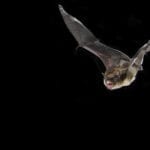To better understand some of the tiniest creatures known to us we need to make cutting-edge technology even sharper and more accessible.
Joost T.P. Verhoeven and colleagues from Memorial University of Newfoundland have done just that in a recent paper published in the Canadian Journal of Microbiology.
The paper describes two methods, ViDiT (Virus Discovery Ion Torrent) and CACTUS (not an acronym), that help biologists extract and read, respectively, viral and bacterial DNA in a quicker, cheaper, and easier way compared with current methods.
Biologists often deal with less than ideal instances of microbial samples ranging from contaminated soil to improperly stored clinical swabs. Often, DNA is hardly detectable in such samples.
ViDiT is sensitive enough to detect low-quality and low quantities of DNA but also versatile enough to extract genetic material from a wide variety of samples.
CACTUS does not require complicated software or expensive hardware—something out of reach for many laboratories. In fact, it can even work on virtual cloud-computing platforms, which means a laboratory anywhere in the world can analyze their data at a low cost.
To prove the effectiveness and versatility of ViDiT and CACTUS, Verhoeven and colleagues collected tissue samples from wild birds of six different species from all over Newfoundland as part of studies on the avian influenza A virus.
ViDiT and CACTUS detected previously known viral genetic material in addition to discovering never-before-described viruses. In each case, they could also read the entire viral gene sequence.
Deep-sea samples are also challenging to work with because it is difficult to extract high-quality genetic material from these microbes that live in extreme environments. The team was successful in reading and deciphering a diverse microbial community in a deep-sea carnivorous sponge—their results closely matched previously published data.
Their work comes at a critical time.
Rising cross-border trade, international tourism, and climate change have contributed to a significant rise in infectious disease outbreaks over the past several decades.
According to the World Bank, the spread of infectious disease is one of the top global economic risks—the annual global cost of moderate to severe pandemics is roughly U.S. $570 billion.
Every month, the World Health Organization receives 5,000 early warning disease signals from around the world, of which at least 30 are closely investigated for their potential to cause epidemics.
Whether it is tracking emerging diseases or finding new microbes, ViDiT and CACTUS are robust, flexible, and cost-effective solutions that put the microbial community at biologists’ fingertips quickly and accurately.
Read the full paper : ViDiT–CACTUS: an inexpensive and versatile library preparation and sequence analysis method for virus discovery and other microbiology applications in the Canadian Journal of Microbiology.




